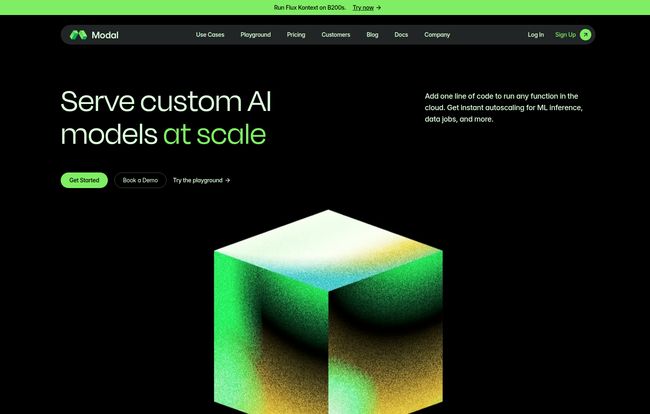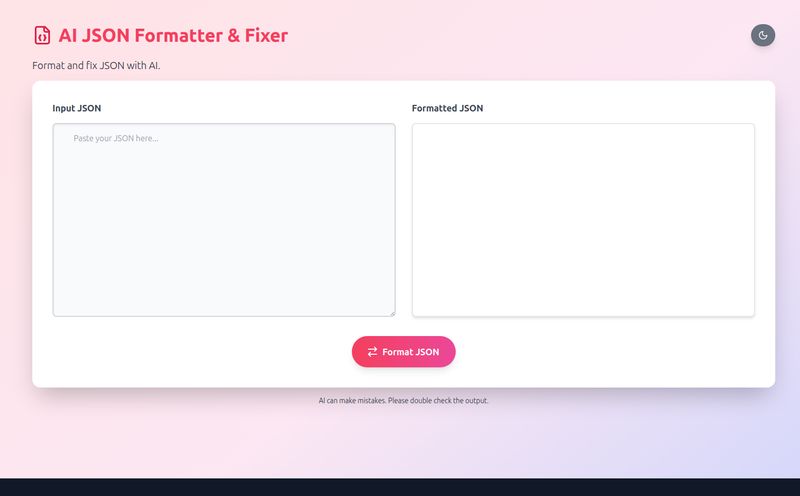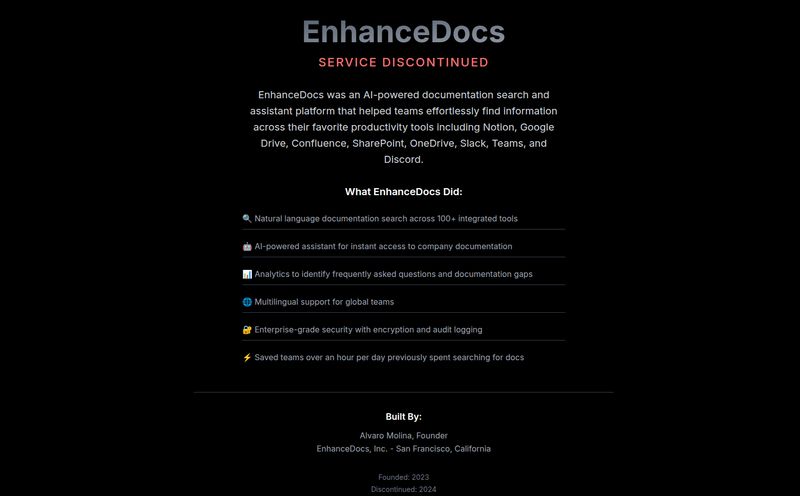I swear, if I have to look at one more 500-line YAML file just to spin up a GPU for a quick experiment, I might just pack it all in and become a goat farmer. We’ve all been there, right? That special kind of purgatory where you're wrestling with IAM roles, VPC configurations and inscrutable error messages from your cloud provider, all while the clock—and the bill—is ticking. You just want to run your code. Is that too much to ask?
For years, the promise of “serverless” has been whispered in the ears of backend and web developers. But for those of us in the data and AI space, it often felt like a party we weren't invited to. Our workloads are spiky, stateful, and hungry for beefy hardware like GPUs, which didn't exactly fit the classic serverless function model.
Then, a few platforms started cropping up, aiming to fix this. One that's been making some serious noise is Modal. The promise is intoxicating: bring your Python code, and they’ll handle the rest. Instant scaling, access to top-tier GPUs, and you only pay for what you use, down to the second. It sounds like the holy grail. But as a seasoned (and slightly cynical) SEO and tech blogger, I've learned to be skeptical of anything that sounds too perfect. So, I decided to take a proper look. Is Modal the real deal, or just more marketing fluff?
Let's Get a Handle on What Modal Actually Does
First off, let's clear up a common misconception. Modal isn't a new programming language or a high-level AI framework like LangChain. You don’t write “Modal code.” Instead, you write your regular Python code, and you use the Modal client library to tell it where and how to run. Think of it less as a new car and more as a magical, on-demand garage with every tool and engine you could ever want. You just drive your existing car in, and it gets instantly upgraded for the task at hand.

Visit Modal
It’s a serverless platform built specifically for AI and data teams. You can take a function from your script and, with a simple decorator, tell it to run on a machine with 8 A100 GPUs and 200 GB of RAM. Modal handles the containerization, the provisioning, the scaling, and the tearing down. Your local machine just orchestrates it. When the job is done, the remote resources vanish, and the billing stops. Instantly. That’s the core idea, and it's a powerful one.
The Good Stuff: Why Modal Turns Heads
Alright, let's get into the features that made me sit up and pay attention. This is where Modal starts to separate itself from the pack.
The Magic of Instant Autoscaling and Fast Cold Starts
The term “cold start” sends a shiver down the spine of anyone who's worked with serverless functions. It's that initial delay when a new instance has to spin up from scratch. For web requests, it's annoying. For an ML model inference API, it can be a deal-breaker. Modal claims sub-second container starts, and in my experience, it’s shockingly fast. This isn’t just a quality-of-life improvement; it fundamentally changes how you can build. You can create a web endpoint for a massive model and not worry about it timing out or paying for it to be idle 24/7. It just works, scaling from zero to hundreds of concurrent requests and back down again without you lifting a finger.
Getting Your Hands on Serious GPU Power (Without a Second Mortgage)
Let's be real, getting access to high-end NVIDIA GPUs like the H100 or A100 can be a nightmare. You're either put on a waitlist, face insane spot-instance prices, or have to commit to long-term reservations. It’s the new digital gold rush. Modal effectively puts these GPUs in a pool for its users. You can request an H100 for a 10-minute fine-tuning job and then release it back into the wild. This democratizes access to state-of-the-art hardware. Suddenly, a small startup or even a solo developer can experiment with infastructure that was previously the exclusive domain of Big Tech. It's like being able to rent a Formula 1 car for a few laps instead of having to buy the whole car and build a racetrack.
A 'Bring Your Own Code' Philosophy
I really appreciate that Modal doesn't try to lock you into a proprietary ecosystem. It’s designed to wrap around your existing code. You can define your environment with a few lines of Python, specifying pip packages or even building from a custom Dockerfile. This flexibility is key. It means you can migrate an existing project to Modal incrementally, function by function, without a massive, all-or-nothing rewrite. It also integrates smoothly with storage providers like S3 and GCS, and offers its own persistent storage solution (`modal.Volume`) for when you need to share state or data between function calls.
Breaking Down the Modal Pricing: Is It Worth It?
This is always the million-dollar question, isn't it? Or in this case, the-fraction-of-a-cent-per-second question. Modal’s pricing is pure pay-per-use, but they have monthly tiers that offer different levels of free credits and features.
| Plan | Monthly Cost | Key Features |
|---|---|---|
| Starter | $0 + compute | Includes $30/month in free credits, 3 seats, limited concurrency. Perfect for individuals and getting started. |
| Team | $250 + compute | Includes $100/month in free credits, unlimited seats, higher concurrency, custom domains. For growing teams. |
| Enterprise | Custom | Volume pricing, private support, SSO, HIPAA, the works. For large orgs with specific compliance needs. |
Note: Compute costs for CPU, GPU, and memory are billed per-second on top of the monthly fee.
When Serverless Saves You Money (and When It Doesn't)
I once racked up a four-figure bill on a personal project because I forgot to shut down a high-memory instance over a weekend. Ouch. Modal's model is the antidote to that specific brand of pain. It’s brilliant for:
- ML Inference APIs: Traffic is often spiky. Why pay for a GPU to be idle 95% of the time?
- Batch Processing Jobs: Run a massive data processing task on hundreds of CPUs for an hour and then pay nothing.
- Fine-tuning Models: Need an H100 for three hours? No problem.
- Development & Experimentation: The generous free credits on the Starter plan mean you can try things without getting out your credit card.
However, let's be honest. If your workload is a constant, 24/7 grind—like training a foundation model for three straight weeks—a reserved instance on a traditional cloud provider will almost certainly be cheaper. Modal's strength is its elasticity. The more your workload looks like a series of sharp peaks and valleys, the more sense it makes.
Okay, But What's the Catch? A Few Caveats
No tool is perfect. Blindly adopting new tech is a recipe for disaster. While I’m genuinely impressed with Modal, there are a few things to keep in mind.
First, there's a learning curve. Yes, it's simpler than raw AWS or GCP, but it's not magic. You still have to learn the Modal SDK and its concepts, like how to structure your app, manage dependencies, and handle state. It’s an abstraction, and like all abstractions, it has its own rules.
Second, you're giving up some control over the underlying infrastructure. For a control freak DevOps engineer who wants to fine-tune kernel parameters, this might feel restrictive. You can't SSH into the box. For most developers and data scientists, this is a feature, not a bug. I'd much rather spend my time refining my model than patching Linux servers. It's a trade-off you have to be comfortable with.
So, Who Is This Really For?
After spending some time with it, I have a pretty clear idea of who gets the most out of Modal. In my opinion, it's a game-changer for:
- AI-powered startups and product teams who need to move fast and can't afford a dedicated DevOps team to manage complex GPU infrastructure.
- Data scientists and ML researchers who just want to run their experiments and analyses without getting bogged down in provisioning hardware.
- Companies with highly variable compute needs, like those running daily data pipelines, periodic model retraining, or user-facing inference endpoints.
Who might want to stick with their current setup? Probably large enterprises with established, highly-optimized MLOps pipelines on a major cloud, or anyone running extremely predictable, long-running compute tasks where the cost-savings of reserved instances are unbeatable.
A Final Thought
Tools like Modal represent a genuine shift in how we approach AI development. They're abstracting away the most painful, undifferentiated part of the job—wrangling infrastructure—so we can focus on what actually creates value: the code and the models. It’s not about removing complexity entirely, but about moving it to the right place. Modal takes on the complexity of the hardware so that we can focus on the complexity of the AI. And for that, I think we've all been waiting for something like this for a long time.
Frequently Asked Questions
How does Modal's pricing compare to AWS or GCP?
For bursty or intermittent workloads (like API calls or batch jobs), Modal can be significantly more cost-effective because you only pay for the exact compute time you use, down to the second. For constant, 24/7 workloads, a long-term reserved instance on AWS or GCP will likely be cheaper.
Can I use my own Docker containers with Modal?
Yes, absolutely. While you can define dependencies directly in Python using `pip`, Modal also fully supports building from a custom Dockerfile. This gives you maximum flexibility for complex environments.
What kind of GPUs can I get on Modal?
Modal offers a wide range of NVIDIA GPUs, including the latest and most powerful ones like the H100 and A100, as well as more standard options like the T4 and A10G. Availability depends on the region and current demand.
Is Modal good for beginners in machine learning?
Modal is excellent for beginners from an infrastructure standpoint, as it removes the huge hurdle of setting up and managing servers. However, you still need to have a solid understanding of Python and the machine learning concepts you're trying to implement. It simplifies the 'how to run,' not the 'what to run.'
How does Modal handle data and files between runs?
Modal has a few ways to handle this. You can easily read/write from cloud storage buckets like S3. For sharing data and state between Modal functions, they offer `modal.Volume`, which is a persistent network file system that your functions can read from and write to.



